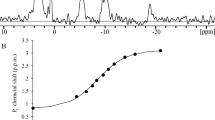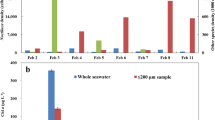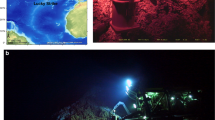Abstract
Blooms of the toxic dinoflagellate Gonyaulax tamarensis (synonyms Protogonyaulax tamarensis1 and Alexandrium tamarense2) cause outbreaks of paralytic shellfish poisoning (PSP) in coastal waters throughout the world. In the Gulf of Maine, episodes occur between April and November, a seasonally due in part to life-cycle alternations between motile, vegetative cells and resting cysts which overwinter in bottom sediments3,4. Newly formed cysts have a mandatory 2–6 month dormancy period during which germination is not possible5, but once mature, the resting state will continue if temperatures are unfavourable5 or oxygen is unavailable6. We now report another factor controlling germination of cysts of G. tamarensis from deep coastal waters—an endogenous annual clock that can override an otherwise favourable environment for germination. Similar annual variability in germination has not been observed for cysts of this species from shallow estuaries. These results represent the first conclusive demonstration of an endogenous circannual rhythm in a marine plant. They are evolutioiiarily and ecologically significant because an endogenous annual clock can lead to the release of motile cells into deep and relatively invariant bottom waters at those times when temperature and light at the surface are suitable for growth. In shallow waters where seasonal variability is large and extends to bottom sediments, a strategy similar to that of the seeds of terrestrial plants would be more appropriate, namely a direct coupling between germination and the external environment.
This is a preview of subscription content, access via your institution
Access options
Subscribe to this journal
Receive 51 print issues and online access
$199.00 per year
only $3.90 per issue
Buy this article
- Purchase on Springer Link
- Instant access to full article PDF
Prices may be subject to local taxes which are calculated during checkout
Similar content being viewed by others
References
Taylor, F. J. R. in Toxic Dinoflagellates (eds Anderson, D. M., White, A. W. & Baden, D. G.) 11–26 (Elsevier, New York, 1985).
Balech, E. in Toxic Dinoflagellates (eds Anderson, D. M., White, A. W. & Baden, D. G.) 33–38 (Elsevier, New York, 1985).
Dale, B. Sarsia 63, 29–34 (1977).
Anderson, D. M. & Wall, D. J. Phycol. 14, 224–234 (1978).
Anderson, D. M. J. Phycol. 16, 166–172 (1980).
Anderson, D. M., Taylor, C. D. & Armbrust, E. V. Limnol. Oceanogr. (in the press).
Famer, D. S. A. Rev. Physiol. 47, 65–82 (1985).
Kenagy, G. J. Comp. Biochem. Physiol. 134, 333–340 (1981).
Sweeney, B. M. Rhythmic Phenomena in Plants (Academic, New York, 1969).
Karssen, C. M. Israel J. Bot. 29, 45–64 (1981).
Bewley, J. D. & Black, M. Physiology and Biochemistry of Seeds in Relation to Germination Vol. 2 (Springer, Berlin, 1982).
Yentsch, C. M. & Mague, F. C. Int. J. Chronobiol 7, 77–84 (1980).
Dale, B., Yentsch, C. M. & Hurst, J. W. Science 201, 1223–1225 (1978).
Fukuyo, Y., Watanabe, M. M. & Watanabe, M. in Eutrophication and Red Tides in the Coastal Marine Environment 43–52 (National Institute (Japan) for Environmental Studies, Tsukuba, 1982).
Anderson, D. M. & Morel, F. M. M. Estuar. coast. mar. Sci. 8, 279–293 (1979).
Konopka, R. J. & Benzer, S. Proc. natn. Acad. Sci. U.S.A. 68, 2112 (1971).
Wall, D. & Dale, B. Micropaleontology 14, 265–304 (1968).
Guillard, R. R. L. & Ryther, J. H. Can. J. Microbiol. 8, 229–239 (1962).
Author information
Authors and Affiliations
Rights and permissions
About this article
Cite this article
Andersen, D., Keafer, B. An endogenous annual clock in the toxic marine dinoflagellate Gonyaulax tamarensis. Nature 325, 616–617 (1987). https://doi.org/10.1038/325616a0
Received:
Accepted:
Issue Date:
DOI: https://doi.org/10.1038/325616a0
This article is cited by
-
Photoperiod-driven rhythms reveal multi-decadal stability of phytoplankton communities in a highly fluctuating coastal environment
Scientific Reports (2022)
-
Evidence of microalgal isotopic fractionation through enrichment of depleted uranium
Scientific Reports (2019)
-
Temperature and Residence Time Controls on an Estuarine Harmful Algal Bloom: Modeling Hydrodynamics and Alexandrium fundyense in Nauset Estuary
Estuaries and Coasts (2015)
-
Dinocyst microlaminations and freshwater "red tides" recorded in Lake Xiaolongwan, northeastern China
Journal of Paleolimnology (2008)
Comments
By submitting a comment you agree to abide by our Terms and Community Guidelines. If you find something abusive or that does not comply with our terms or guidelines please flag it as inappropriate.



